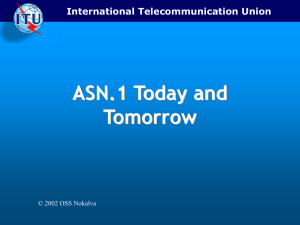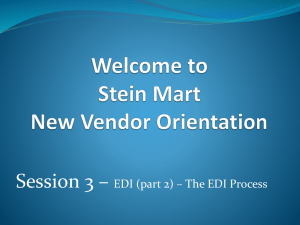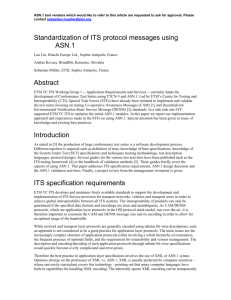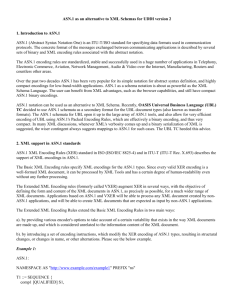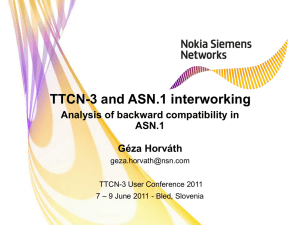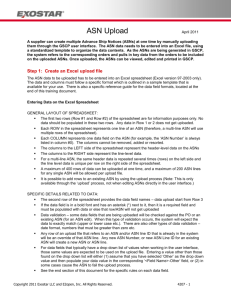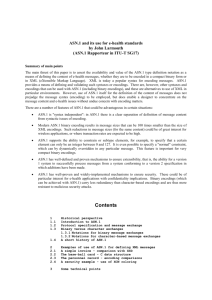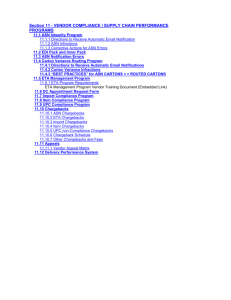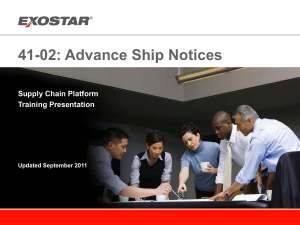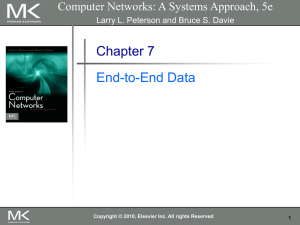Introduction - ASN.1 in context
advertisement
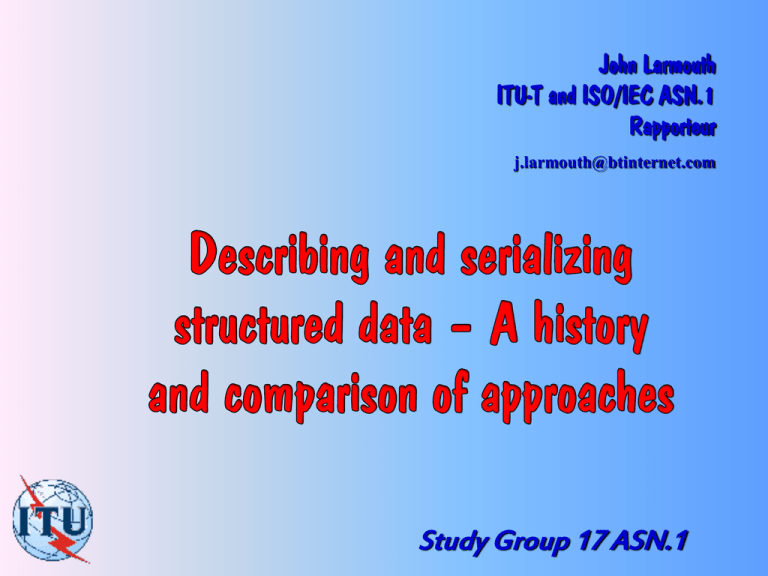
John Larmouth ITU-T and ISO/IEC ASN.1 Rapporteur j.larmouth@btinternet.com Study Group 17 ASN.1 Terminology has changed over time n n n n n n n Markup languages Abstract Syntax and Concrete Syntax Abstract syntax notation and encodings Schema definition Describing and serializing structured data The terms all mean roughly the same thing! That is the main message from this tutorial – In the 1980s, it was sexy to talk about Abstract Syntax and encodings" – Today it is sexy to talk about describing and serializing structure data Study Group 17 ASN.1 What is structured data? n n There is a general recognition that we are talking about data that can be best described using basic primitives like integers and booleans and strings And “structuring” (with various names) using sequence, sequence of (repetitions), and choice Study Group 17 ASN.1 ASN.1 has developed over time (1) n n n Developments to meet user demands All added immense richness, but inevitably more to be learned if you need the richness Description of structured data was extended to include information object classes, bringing with it much greater use of object identifiers and the need for the OID repository – so much so that OIDs have a life of their own, and a tree structure Study Group 17 ASN.1 ASN.1 has developed over time (2) n n Description of structured data was extended to include addition of constraints, which were visible for encoding rules (bringing ASN.1 more into line with programming languages Parameterization of the basic notation was introduced (but not heavily used) Study Group 17 ASN.1 ASN.1 has developed over time (3) n n n More encoding rules were added, some becoming very popular (e.g. PER) Encoding control notation was introduced (a substantial new topic, but not much used (?) ) Object identifier resolution using DNS was introduced – still in its gestation period in 2012, but very important Study Group 17 ASN.1 ASN.1 has developed over time (4) n n n Fast web services and Fast Infoset were introduced, targeting the “XML heartland” Competition with EXI became an issue – still not fully resolved. Today there is increasing competition on the notation to be used for structured data definition and its serialization/encodings – discussion later Study Group 17 ASN.1 The bottom line n Through-out all of this, ASN.1 has always been, and still is, the ITU-T Recommendation for the description and serialization of structured data Study Group 17 ASN.1 Acronyms and standard names – you cannot avoid them (1)! n n n n n n n SGML ASN.1 TLV HTML, XML XSD, Relax NG PER, XER OIDs Study Group 17 ASN.1 Acronyms and standard names – you cannot avoid them (2)! n n n n n n n JSON (RFC 4627) and BSON Google Protocol Buffers RFC 3072, RFC 4506 YAML Thrift ETCH Hadoop Study Group 17 ASN.1 When will I stop? n n n n Some of you may be leaving the room! I just want to do a little historical stuff, and then to invite some discussion on things today I know that some groups are investigating other notations and encodings I believe that in most cases they have decided to stay with ASN.1. I would like to invite comments shortly. Study Group 17 ASN.1 The 1960s to early 1980s n n n n People used typewriters! Physical cut and past (I have still scissors from those days!) was the way standards were developed! (some others in this room also did!) Markup languages were developed (Tex and Latex, for example) Immensely important as the basis for future work Study Group 17 ASN.1 The 1980s – a heady time (1) n n n Led into IBM’s seminal work on SGML, which led to HTML from CERN, and in due course to XML These were all essentially mark-ups of content (encoding rules), not structured data definition. OSI badly needed a way of describing the structured data in protocols. Study Group 17 ASN.1 The 1980s – a heady time (2) n n n I don’t want to waste your time too much on history, but I have to mention Doug Steedman and Jim White (see other sources of description ASN.1 became established – there was no real competitor! OSI badly needed a way of describing the structured data in protocols. ASN.1 emerged from Courier work in Rank Xerox. Study Group 17 ASN.1 The 1980s – a heady time (3) n n n n Papers at that time were addressing “OSI versus SNA”. They later changed to OSI versus TCP/IP. We all know which won! But ASN.1 remained as the notation of choice for the definition of structured data Study Group 17 ASN.1 The 1990s – stability? (maybe not!) n n n n The XML people introduced XSD. Standardise a mapping from XSD to ASN.1? Or vice-versa? Or a round-trip mapping? “You map from a competitor notation to yours, not vice-versa” – bad advice which led to people using XSD as the schema definition of choice, relying on the mapping to ASN.1 for ASN.1 binary encodings. XML encoding rules for ASN.1 (XER) Study Group 17 ASN.1 And to the 2000s – it is up in the air again! n We have a plethora of new options: – – – – – – – – JSON and BSON Google Protocol Buffers Candle markup Bencode YAML Hadoop Thrift What have I missed? Study Group 17 ASN.1 ASN.1 remains the choice for … n n n n n n n n Big Data Satellie (Europe’s Galileo project) Aviation (3GPPP 4G, LTE Advanced online gaming Wind turbines Personal health records Smart highways Electrical smart grid Study Group 17 ASN.1 Discussion invited please! I am done! Study Group 17 ASN.1
